Under the wave of new energy vehicles, CNC machining technology adaptation and upgrade
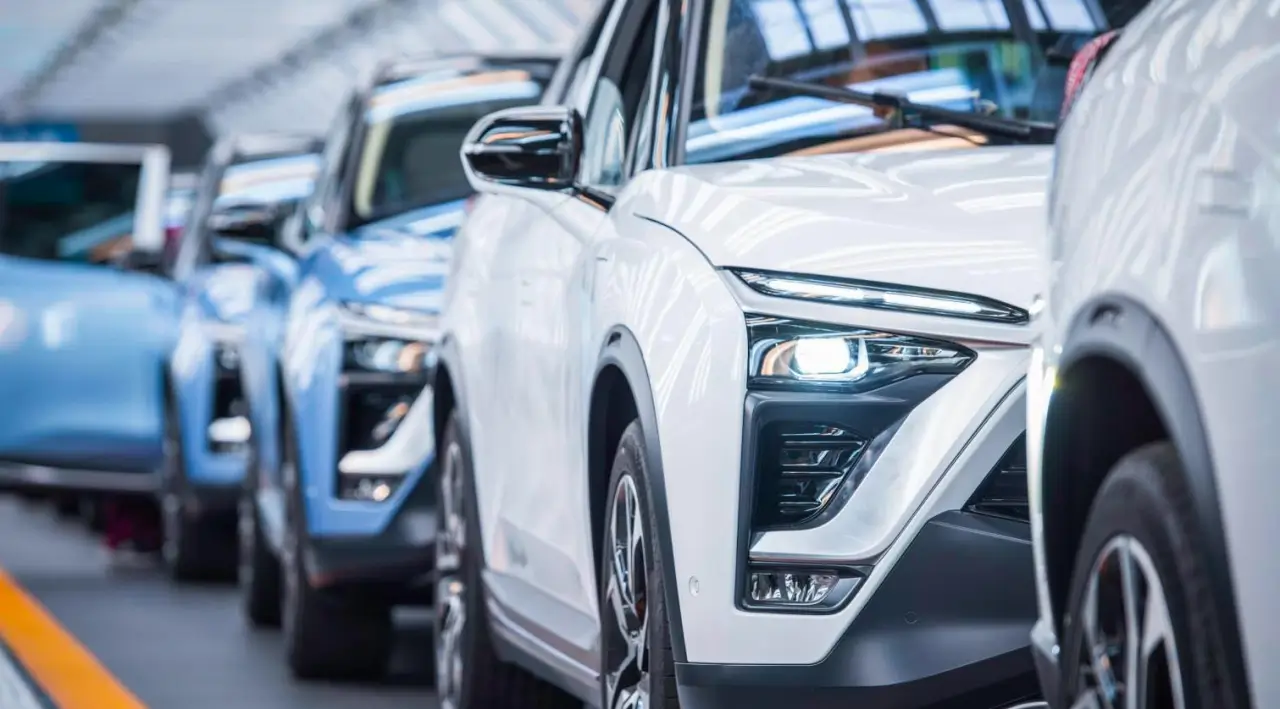
Amidst the explosive growth of the new energy vehicle industry, CNC machining technology must address new demands for high-precision, lightweight new material processing, and large-scale, efficient production of the "three-electric" (Electric, Electric, and Vehicle) systems. Drawing on the practical experience of companies like Tesla, BYD, and NIO, this article systematically analyzes the adaptation directions for CNC machining (customizing machining solutions for Electric, Electric, and Vehicle (Electric, Electric, and Vehicle) components and overcoming the challenges of machining aluminum alloys and carbon fiber composite materials) and upgrade paths (upgrading equipment to high-speed, high-precision, and multi-axis linkage, optimizing cutting parameters and paths, and promoting the integration of automation and intelligence). It also proposes strategies such as financing and leasing, as well as university-enterprise collaboration, to address the cost, talent, and technology integration pain points of enterprise upgrades, providing practical references for new energy vehicle component manufacturers.
of the new energy vehicle boom ?" This article provides clear answers through case studies from leading companies. Regarding technological adaptation, Tesla uses high-speed, high-precision CNC machine tools combined with cryogenic cutting for battery housings (aluminum alloy), achieving flatness tolerances within 0.01mm. BYD utilizes a five-axis machining center for multiple processes in a single clamping process, reducing cumulative errors to below 0.005mm. For carbon fiber body frames, NIO uses PCD tools combined with spiral milling, increasing its pass rate from 65% to 98%. The upgrade involves introducing high-speed, high-precision equipment from DMG and FANUC, establishing a cutting parameter database and optimizing process paths, and implementing automated production lines (Tesla's single-shift output increased by 87.5%) and intelligent monitoring systems (CATL reduced downtime by 75%). These efforts effectively address the unique CNC machining requirements of new energy vehicle manufacturing.
This article not only breaks down the specific technical solutions for adapting CNC machining to new energy vehicle manufacturing but also offers practical solutions to address key concerns for companies, such as cost pressure , talent shortages , and technical integration difficulties. Subsequent chapters cover practical topics such as complete parameter settings for Tesla battery housing machining, error control details for BYD motor rotor shaft machining, and tool wear reduction solutions for NIO carbon fiber machining. Furthermore, along with equipment selection strategies for companies of different sizes, this article will provide comprehensive guidance, from theory to practice, to help companies efficiently adapt and upgrade their CNC machining technology.
Current status of new energy vehicle development and special requirements for manufacturing
Current status of new energy vehicle development
In recent years, the global new energy vehicle market has expanded rapidly . From the perspective of technology, pure electric vehicles have occupied a dominant position in the market with their advantages such as zero emissions and low operating costs .
In terms of industry chain layout, the new energy vehicle industry chain has formed a complete system, from upstream raw materials (battery materials such as lithium, cobalt, and nickel, and motor materials such as rare earths), midstream core components (batteries, motors, electronic controls, charging stations, etc.), to downstream vehicle manufacturing and aftermarket services. my country has strong competitiveness in the new energy vehicle industry chain, with a number of internationally influential companies in battery manufacturing and vehicle assembly.
Special requirements of new energy vehicles for manufacturing
- The core components of the "three electrics" (electric, motor, and control) system of new energy vehicles require extremely high precision. For example, the coaxiality error of the motor rotor must be controlled within 0.005mm, otherwise it will affect the motor's operating efficiency and stability. If the flatness error of the battery housing exceeds 0.02mm, it may lead to poor sealing of the battery and pose a safety hazard.
- High consistency requirements: The large-scale production of new energy vehicles requires a high degree of component consistency. Taking battery modules as an example, the dimensions and performance parameters of each battery cell must be highly uniform to ensure the overall stable performance of the battery module. This places strict demands on the batch consistency of component processing.
- New Material Processing Requirements: To achieve lightweighting, new energy vehicles widely utilize new materials such as aluminum alloys and carbon fiber composites. While aluminum alloys offer advantages such as low density and high strength, they are prone to problems such as tool sticking and deformation during processing. Carbon fiber composites, on the other hand, exhibit anisotropy, high hardness, and high brittleness. Traditional processing methods can easily lead to delamination and edge collapse, making them extremely difficult to process.
- Efficient production requirements: With the growing demand for new energy vehicles, companies need to improve production efficiency to meet market supply. This requires manufacturing equipment to have higher processing speeds and longer continuous operation times, while reducing auxiliary time in the production process to achieve efficient operation of the production line.
Technical adaptation direction of CNC machining in new energy vehicle manufacturing
Processing and adaptation of core components of the "three-electric" system
- Battery system parts processing and adaptation
Battery systems are the core energy source for new energy vehicles. Because battery housings are typically made of aluminum alloy and are large in size (some power battery housings exceed 2 meters in length), traditional CNC machining equipment is prone to vibration during processing, resulting in reduced machining accuracy. Therefore, it is necessary to adapt and upgrade the CNC machining equipment, using a highly rigid machine bed and guideways, equipped with a high-power spindle motor, to improve the equipment's vibration resistance and cutting stability. Furthermore, to address the complex cavity structure of the battery housing, multi-axis CNC machining technology is employed to achieve single-clamping machining of multiple surfaces, reducing clamping errors and improving machining accuracy and efficiency.
Battery terminals require excellent electrical conductivity and corrosion resistance, and are typically made of copper alloy. Copper alloys have good thermal conductivity, and heat can easily transfer to the cutting tool during machining, causing it to wear out too quickly. To address this issue, CNC machining requires specialized tool materials, such as ultra-fine-grain carbide cutting tools and diamond-coated cutting tools. These tools offer high hardness and wear resistance, effectively extending tool life. Furthermore, optimizing cutting parameters, reducing cutting speeds, increasing feed rates, and reducing heat generated during cutting can also improve the machining quality of battery terminals.
- Motor system parts processing and adaptation
The motor system is the power core of new energy vehicles and is primarily composed of components such as the stator, rotor, and end caps. The adaptive application of CNC machining technology in stator core processing is primarily reflected in the use of CNC punching machines and CNC laser cutting equipment to achieve high-precision and high-efficiency processing of stator core laminations. CNC punching machines control the motion trajectory of the punch through a high-precision servo system, enabling the stamping of complex shapes with a blanking accuracy of up to ±0.01mm. CNC laser cutting equipment utilizes a high-energy-density laser beam to cut the material, achieving high cutting accuracy and excellent cut quality, meeting the high-precision requirements of stator core laminations.
The rotor shaft is a rotating component of the motor , so CNC machining requires a turning-milling composite machining center. This equipment can complete multiple machining processes such as turning, milling, and drilling of the rotor shaft in one clamping, reducing the number of clamping times, reducing cumulative errors, and improving machining efficiency.
- Processing and adaptation of electronic control system components
CNC machining needs to be adapted to high-speed milling technology, using a high-speed spindle (speed can reach over 15,000 r/min) and dedicated carbide tools. Through high-speed, small feed cutting methods, the surface quality of the machined parts can be improved and tool wear can be reduced.
As a key heat sink component in electronic control systems, IGBT module heat sink substrates require excellent thermal conductivity and insulation properties. Typically, a ceramic copper-clad substrate (DBC) is used. Ceramic copper-clad substrates are difficult to process. The application of CNC machining in this area primarily utilizes ultrasonic vibration cutting technology. By applying high-frequency vibrations (up to 20-40kHz) to the tool, a tiny gap is created between the tool and the workpiece, reducing cutting forces and heat, thereby lowering the risk of ceramic breakage and improving machining quality.
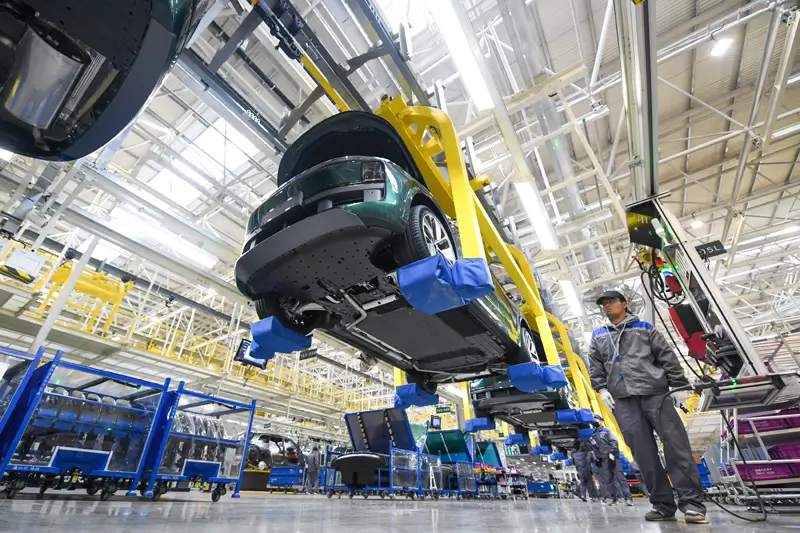
Processing adaptation for lightweight materials
- Aluminum alloy material processing adaptation
Aluminum alloys are widely used in components such as new energy vehicle bodies, chassis, and battery casings . In addition to the high-rigidity equipment, specialized tools, and optimized cutting parameters mentioned above for processing battery and controller casings, cryogenic cutting technology can also be employed. This technology sprays liquid nitrogen or compressed air into the cutting area to lower the temperature, reducing tool sticking in the aluminum alloy while also increasing the material's hardness and strength and minimizing machining distortion. For example, using cryogenic cutting technology in the processing of aluminum alloy battery casings can reduce surface roughness by over 30% and extend tool life by over 50%.
- Carbon fiber composite material processing adaptation
Carbon fiber composites, with their advantages of high specific strength, high specific modulus, and excellent corrosion resistance, are gradually being used in components such as new energy vehicle body frames and doors. However, their anisotropy and high hardness pose significant challenges to CNC machining. When selecting cutting tools, polycrystalline diamond (PCD) and cubic boron nitride (CBN) cutting tools are required. These tools offer high hardness and excellent wear resistance, effectively addressing the machining challenges of carbon fiber composites. Regarding machining processes, high-speed drilling and milling techniques are employed, along with compressed air or water mist cooling, to reduce heat generated during cutting and prevent material burns and delamination. Furthermore, by optimizing tool paths and adopting spiral milling instead of traditional drilling, the edge collapse of carbon fiber composites can be effectively reduced.
Upgrading strategies for CNC machining technology
Equipment upgrade - application of high-speed and high-precision CNC machine tools
High-speed, high-precision CNC machine tools feature high rotational speeds, high feed rates, and high positioning accuracy, meeting the high-precision, high-efficiency machining requirements of core components for new energy vehicles. For example, Germany's DMG Mori Seiki's DMC 80 FD duoBLOCK high-speed machining center boasts a spindle speed of up to 20,000 rpm, a rapid traverse speed of up to 60 m/min, and a positioning accuracy of ±0.003 mm, enabling high-precision machining of components such as motor rotors and stators. During equipment upgrades, companies should select high-speed, high-precision CNC machine tools of appropriate specifications based on their processing needs, and prioritize their equipment's stability and reliability to ensure long-term, continuous operation.
Promotion of multi-axis CNC processing equipment
Multi-axis CNC machining equipment (such as five-axis machining centers) enables single-clamping machining of complex curved parts, reducing clamping times, lowering cumulative errors, and improving machining precision and efficiency. For example, my country's Kede CNC's GMC2510u five-axis machining center offers five-axis machining with a precision of up to 0.005mm, meeting the machining requirements of complex parts for new energy vehicles. When promoting multi-axis CNC machining equipment, companies should strengthen operator training and improve their technical skills to ensure the equipment can fully utilize its capabilities.
Process optimization
- Cutting parameter optimization
The proper selection of cutting parameters (such as cutting speed, feed rate, and depth of cut) directly impacts the quality, efficiency, and cost of CNC machining. Cutting parameters should be optimized based on the material and machining process. Companies can conduct cutting tests and establish a cutting parameter database to develop optimal cutting parameter solutions for machining different parts.
- Processing path optimization
Optimizing machining paths can reduce tool idle time, improve machining efficiency, reduce tool wear, and enhance machining quality. In CNC machining, computer-aided manufacturing (CAM) software can be used to optimize machining paths. For example, in the machining of battery casings, CAM software optimizes the tool path, allowing the tool to follow the shortest path and reduce idle time. In the machining of complex curved parts, advanced machining path strategies such as contour machining and spiral machining can be used to improve surface quality. Furthermore, adaptive machining technology can be used to adjust the machining path in real time based on actual machining conditions (such as tool wear and workpiece deformation) to ensure machining quality.
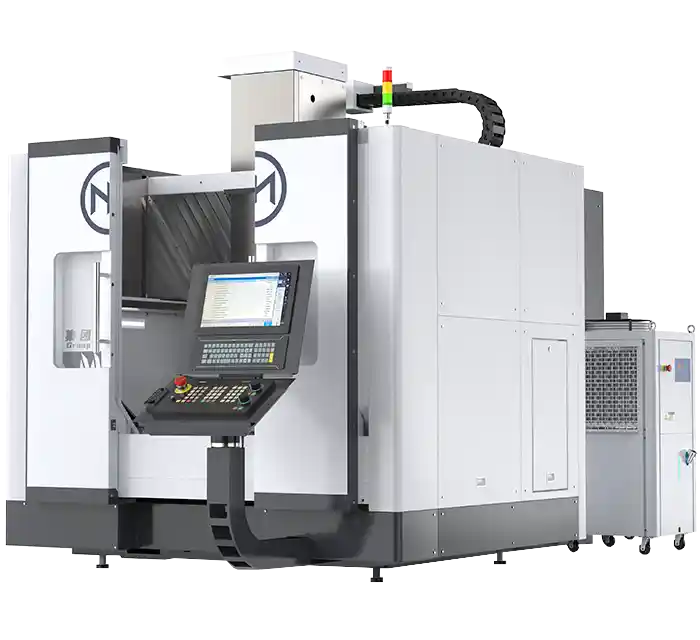
Automation and intelligent upgrades
- Automated production line construction
Automated production lines enable continuous, automated processing of new energy vehicle parts, improving production efficiency, reducing labor costs, and ensuring consistent processing quality. In building automated production lines, companies should integrate CNC processing equipment, robots, conveying equipment, and testing equipment to achieve automated loading and unloading, processing, testing, and conveying of parts.
- Application of intelligent monitoring and diagnosis system
The intelligent monitoring and diagnosis system can monitor the operating status of CNC processing equipment, cutting force, temperature, vibration and other parameters during the processing in real time, promptly detect equipment failures and abnormal conditions during the processing, and provide early warning and diagnosis.
Pain points and solutions faced in the process of CNC machining technology adaptation and upgrading
Pain points faced
- High cost pressure
Upgrading CNC machining equipment (such as high-speed, high-precision CNC machine tools and multi-axis CNC machining equipment) and building automated production lines require substantial capital investment, placing significant cost pressure on small and medium-sized new energy vehicle parts manufacturers. Furthermore, the high prices of new cutting tools (such as diamond-coated and PCD cutting tools) and auxiliary materials (such as liquid nitrogen and specialized cutting fluids) also increase production costs.
- Shortage of skilled talent
Under the wave of new energy vehicles, the adaptation and upgrading of CNC machining technology have put forward higher requirements for technical talents. Technical personnel are required not only to master the basic knowledge and operation skills of CNC machining, but also to be familiar with the processing technology of new energy vehicle parts, the processing characteristics of new materials, and the application of automation and intelligent technologies.
- High difficulty in technology integration
The adaptation and upgrade of CNC machining technology involves technologies in multiple fields, including equipment, processes, automation, and intelligence, and the integration of these technologies is quite challenging. For example, in the construction of automated production lines, it is necessary to integrate CNC machining equipment, robots, testing equipment, and other equipment of different brands and models to achieve information exchange and collaborative work between the equipment. This requires resolving issues such as inconsistent device interfaces and data formats. In the application of intelligent monitoring and diagnostic systems, it is necessary to analyze and process the data collected by sensors to establish accurate fault diagnosis models, which requires a solid foundation in data processing and machine learning technologies.
Solution
- Alleviate cost pressure
On the one hand, companies can reduce initial equipment procurement costs by strengthening cooperation with equipment suppliers and adopting financing leases and equipment sharing. On the other hand, companies can reduce unit production costs by optimizing production management, improving equipment utilization and production efficiency. For example, companies can rationalize production plans to reduce equipment idle time and strengthen tool management to reduce tool consumption costs through tool life management and recycling.
- Strengthen talent training and introduction
Enterprises should strengthen cooperation with universities and vocational schools, establish school-enterprise cooperation training bases, provide students with practical opportunities, and cultivate CNC processing technical talents that meet the needs of enterprises. Regularly organize technical personnel to participate in industry seminars and training courses to learn advanced technology and management experience and improve their professional level.
- Improve technology integration capabilities
Enterprises can strengthen cooperation with scientific research institutions and industry associations and use external technical forces to solve problems .
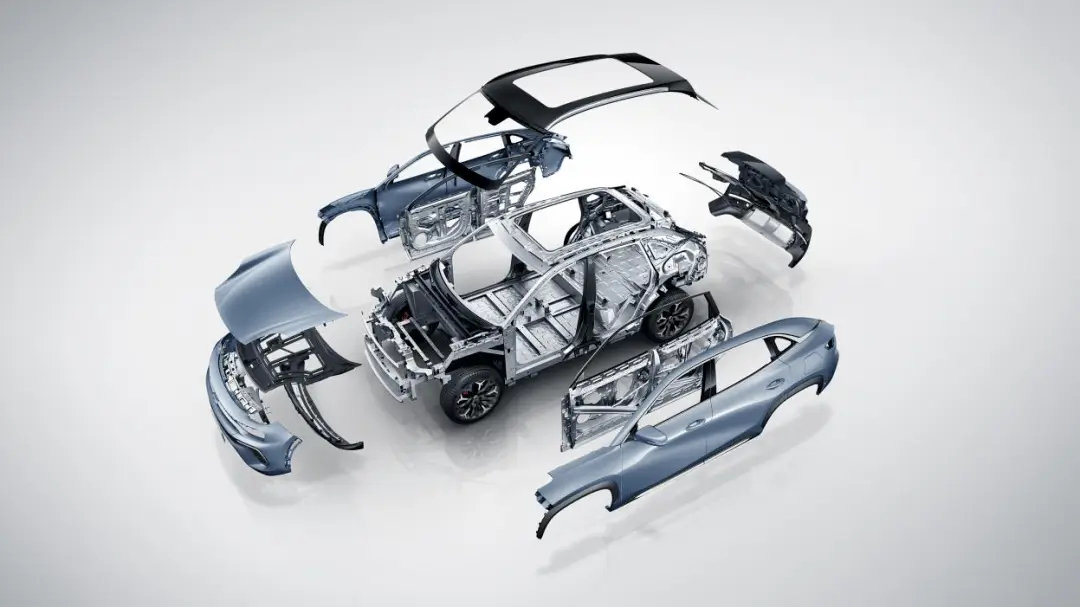
Future Outlook
For CNC processing companies, they need to keep up with the development trend of the new energy vehicle industry, continue to increase investment in technological research and development, enhance independent innovation capabilities, and focus on breakthroughs in core technologies such as ultra-high-speed and high-precision processing, new material processing, and intelligent integration; at the same time, strengthen cooperation with upstream and downstream companies in the industrial chain, build a coordinated development industrial ecosystem, and achieve their own high quality while adapting to the changes in the new energy vehicle industry.



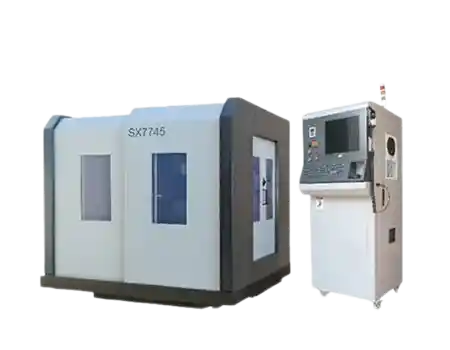
 Email
Email sales1: +86 13295238763
sales1: +86 13295238763

